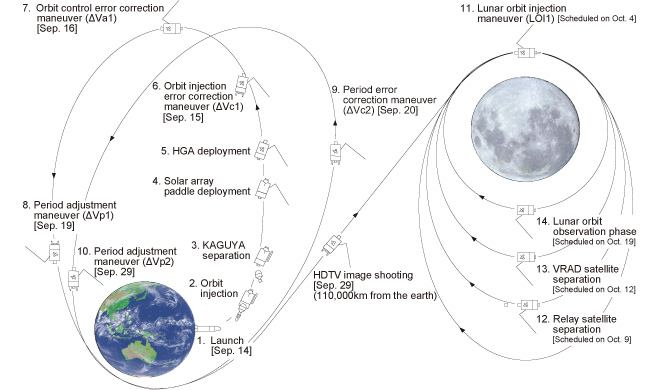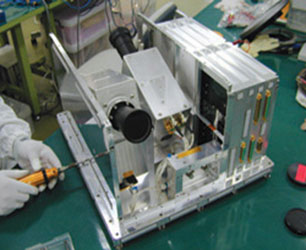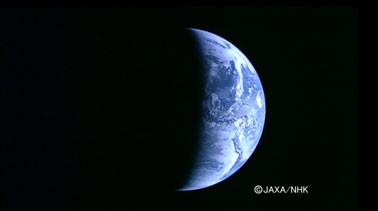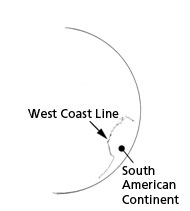Lunar Explorer KAGUYA (SELENE)
Successful Image Taking by the High Definition Television (HDTV)
Japan Aerospace Exploration Agency (JAXA)
NHK (Japan Broadcasting Corporation)
Japan Aerospace Exploration Agency (JAXA) and NHK (Japan Broadcasting Corporation) have successfully taken high definition moving images through the KAGUYA (SELENE) for the first time. The KAGUYA is a lunar explorer launched on September 14 (Japan Standard Time, JST) from the Tanegashima Space Center.
The images were taken by the KAGUYA's onboard High Definition Television (HDTV), which was developed by NHK for space use. It is the first high-definition image shooting of the Earth from so deep in space - about 110,000 km away from the Earth - in human history. The moving image data acquired by the KAGUYA was received at the JAXA Usuda Deep Space Center, then processed at NHK.
The satellite was confirmed to be in good health through telemetry data received at the Usuda station.
The world's first high definition image shooting of the Earth from about 110,000 km deep in space. (Up until today, we have taken images from the Space Shuttle and the International Space Station (ISS,) which fly about 340 km away from the Earth.) The West Coast of South America looks brighter as it was day time there when the image was taken.
The moving image was taken by eight-fold speed intermittent shooting (eight minutes is converged to one minute) at 9:46 p.m. on September 29, 2007 (JST,) then received at the JAXA Usuda Deep Space Center at 9:40 a.m. on September 30, 2007 (JST). Part of the acquired moving image data was processed for this still image.
|
|

KAGUYA (SELENE) Flight Path to the Moon (Pattern Diagram)

High Definition Television (prior to loading on the KAGUYA)

